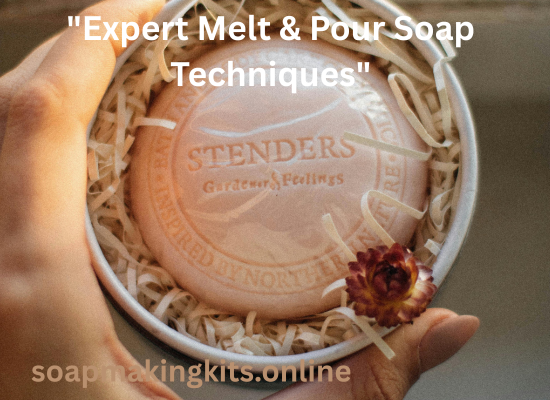Melt-and-pour soap-making is an easy and creative craft, perfect for beginners since it skips the complexity of working with lye. By selecting premium soap bases, perfecting layering techniques, and steering clear of common pitfalls, you can craft beautiful, high-quality soaps. Follow these expert tips to make your soap-making experience enjoyable and hassle-free!
When I first tried making soap from scratch, I was terrified of handling lye and messing up measurements. Then I stumbled upon melt-and-pour soap-making kits—a beginner-friendly solution that lets you skip the chemistry lab vibe. There is no cooker here, which is the main reason why some kits do not come together completely. Some leave you with cloudy soap, while others melt into a gooey mess.
In this guide, I’ll spill the beans on how to avoid rookie mistakes, pick the best supplies, and craft stunning soap that looks like it’s from a boutique. Whether you’re crafting gifts or starting a small business, these tips will save you time, money, and frustration. Let’s dive in!

Why Melt and Pour Soap Making Kits Are Perfect for Beginners
Melt and pour (M&P) kits are the “gateway drug” to soap making. Unlike cold process methods, there’s no lye handling or curing time. Just melt, pour, and voilà! Here’s why they’re a no-brainer:
Safety First: No caustic chemicals—ideal for kids and crafters with allergies.
Quick Results: Soap sets in 1–2 hours, perfect for last-minute gifts.
Customizable: Add colors, scents, and botanicals without complicated recipes.
Pro Tip: Anne-Marie Faiola, founder of Bramble Berry, says, “M&P is where creativity meets convenience. It’s how most artisans start their journey.”
Read more: How to Make Bar Soap at Home
How to choose a good and high-quality melt-and-pour soap base

Not all bases are created equal. Here’s what to look for:
- Clear Glycerin: Best for embedding objects or layering.
- Shea Butter: Ultra-moisturizing for dry skin.
- Goat’s Milk: Creamy lather and gentle for sensitive skin.
Case Study: A 2023 survey by Soap Crafters found that 78% of users prefer goat’s milk bases for their luxurious feel.
Creative Add-Ins and Customizations
- Swirls: Use a toothpick to marble colors.
- Allow each layer to cool slightly before pouring the next to create clean, distinct layers.
- Embeds: Freeze small soap shapes and place them in a new batch.
Personal Anecdote: My first attempt at embedding rose petals turned into a soggy disaster. Lesson learned: dry botanicals work best!
Read more: Know where to find the best soap-making store and supplies
Step-by-Step Guide to Creating Gorgeous Soap
1. Gather Your Supplies
- Melt and pour base (shea butter, glycerin, or goat’s milk)
- Silicone molds (star shapes, geometric designs)
- Colorants: Mica powders or liquid dyes
- Fragrance: Essential oils or skin-safe scents
- Tools: Microwave-safe bowl, spatula, rubbing alcohol
2. Melt the Base
Chop the base into cubes, melt in short bursts, and stir until smooth.
Fun Fact: Glycerin-based soap melts at 120–140°F—way lower than candle wax!
3. Customize Your Mix
- Color: Add mica powder slowly (a little goes a long way!).
- Scent: Stir in 1 tsp fragrance oil per pound of base.
- Texture: Mix in oatmeal, coffee grounds, or dried flowers.
4. Pour and Set
Spritz the mold with alcohol, pour the mix, and tap to release bubbles. Let it harden at room temperature—no fridge is needed!
Read more: How to make loofah soap with a step-by-step guide
Expert Tips for Professional Results
- Prevent Sweating: Wrap finished soap in plastic wrap—glycerin attracts moisture.
- Label Like a Pro: Include ingredients and “best by” dates (6–12 months shelf life).
- Sell Your Creations: Farmers’ markets love handmade soap—markup can be 300%!
Top 5 Mistakes to Avoid When Using Melt and Pour Kits
- 1. Overheating the Soap Base
- Zapping the base in the microwave too long? You’ll end up with a bubbly, discolored mess. Fix: Melt in 30-second bursts and stir between intervals.
- 2. Using Cheap Fragrance Oils
- That dollar-store lavender oil might smell heavenly, but it can cause seizing.
Fix: Invest in skin-safe fragrance oils (I love Nature’s Garden). - 3. Skipping Rubbing Alcohol
- Are air bubbles ruining your sleek design? Spritz with 91% isopropyl alcohol before pouring.
- 4. Overloading with Add-Ins
- Too much glitter or botanicals? Your soap might crumble. Fix: Stick to 1 teaspoon per pound of base.
- 5. Rushing the Unmolding Process
- Impatience leads to broken edges. Fix: Pop the mold in the freezer for 10 minutes for a clean release.
Read more: Liquid Castile Soap Making Recipe with 100 percent olive oil
Conclusion
Melt-and-pour soap-making kits are your ticket to stress-free creativity. With the right base, a dash of patience, and these pro tips, you’ll craft soap that’s both beautiful and functional. Got questions? Drop a comment below—I’d love to help!
Read more: Recipe to make liquid soap at home Prepare a natural cleanser
FAQS
1. Can you remelt melt and pour soap?
Absolutely! Chop it up, re-melt, and repurpose. No waste here.
2. How long does M&P soap last?
You may need to leave it for 1-2 years to store it properly in a cool, dry place.
3. Can I use food coloring?
Skip it—it can stain skin. Opt for soap-safe colorants instead.